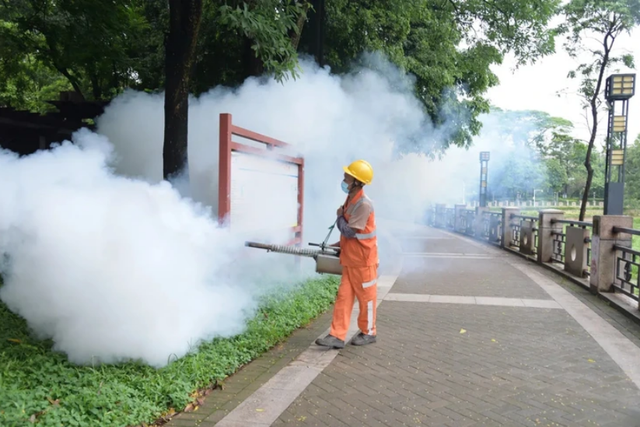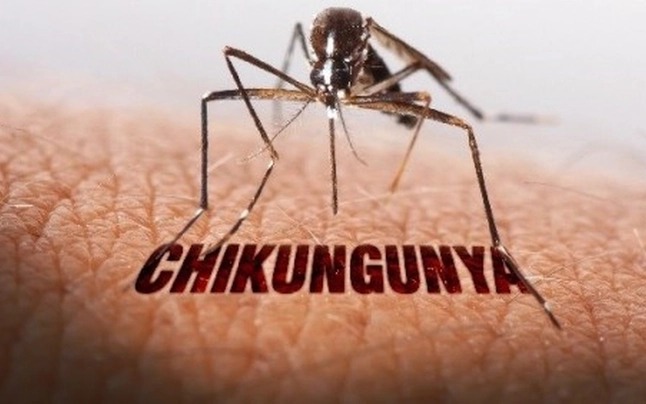
A sanitation worker sprays insecticide to prevent the spread of Chikungunya in Dongguan, Guangdong Province, China, August 3, 2025. Photo: Bloomberg
Given that Chikungunya has previously circulated in Vietnam, the city's Department of Health is urging all health facilities to remain vigilant for signs of infection and implement measures to prevent its resurgence.
The plan comes in response to a recent surge of Chikungunya in southern China, primarily in Foshan City, where cases have risen to over 8,000, prompting authorities to implement strict measures similar to those used during the COVID-19 pandemic, according to The Guardian.
As part of preventive efforts, health units at border gates are required to screen entrants with infrared body temperature monitors to detect early symptoms of Chikungunya.
Those arriving from affected regions who develop a fever must declare their travel history and follow a 12-day self-health monitoring period under guidance from health authorities.
The department has tasked the municipal Hospital for Tropical Diseases to collaborate with the city's Center for Disease Control (HCDC) to train medical staff in diagnosing, treating, and preventing complications, with a focus on elderly individuals and those with underlying health conditions.
Relevant agencies have also been instructed to strengthen epidemiological surveillance and report Chikungunya cases through the infectious disease management system.
The HCDC will coordinate with the Ho Chi Minh City Pasteur Institute and the city-based Oxford University Clinical Research Unit to monitor the causative agent.
A central element of the plan is a citywide mosquito and larva elimination campaign running from August 23 to September 30, which includes large-scale mosquito spraying and mobilizing households to remove standing water that provides breeding sites for mosquitoes.
The health department emphasized that those failing to comply with assigned tasks will face strict penalties under Government Decree 117/2020, which regulates administrative sanctions in the health sector.
Chikungunya is an acute infectious disease caused by the Chikungunya virus, primarily transmitted by Aedes aegypti and Aedes albopictus mosquitoes — the same species responsible for spreading dengue fever and Zika virus.
Over recent decades, the disease has spread to 119 countries and territories worldwide, according to the World Health Organization.
The illness is usually mild and resolves on its own within a few days to a few weeks, although joint pain can persist for months or even years in a small number of cases.
Fatalities are very rare and generally occur only among individuals with weakened immune systems, such as newborns, the elderly, or those with underlying health conditions.
As there is currently no specific treatment or vaccine for Chikungunya, the most effective preventive measures are avoiding mosquito bites and eliminating mosquito breeding sites.
Anyone experiencing symptoms such as fever, joint pain, or rash after returning from epidemic areas, or who suspects infection, should seek medical attention promptly to ensure timely diagnosis and treatment.



Max: 1500 characters
There are no comments yet. Be the first to comment.